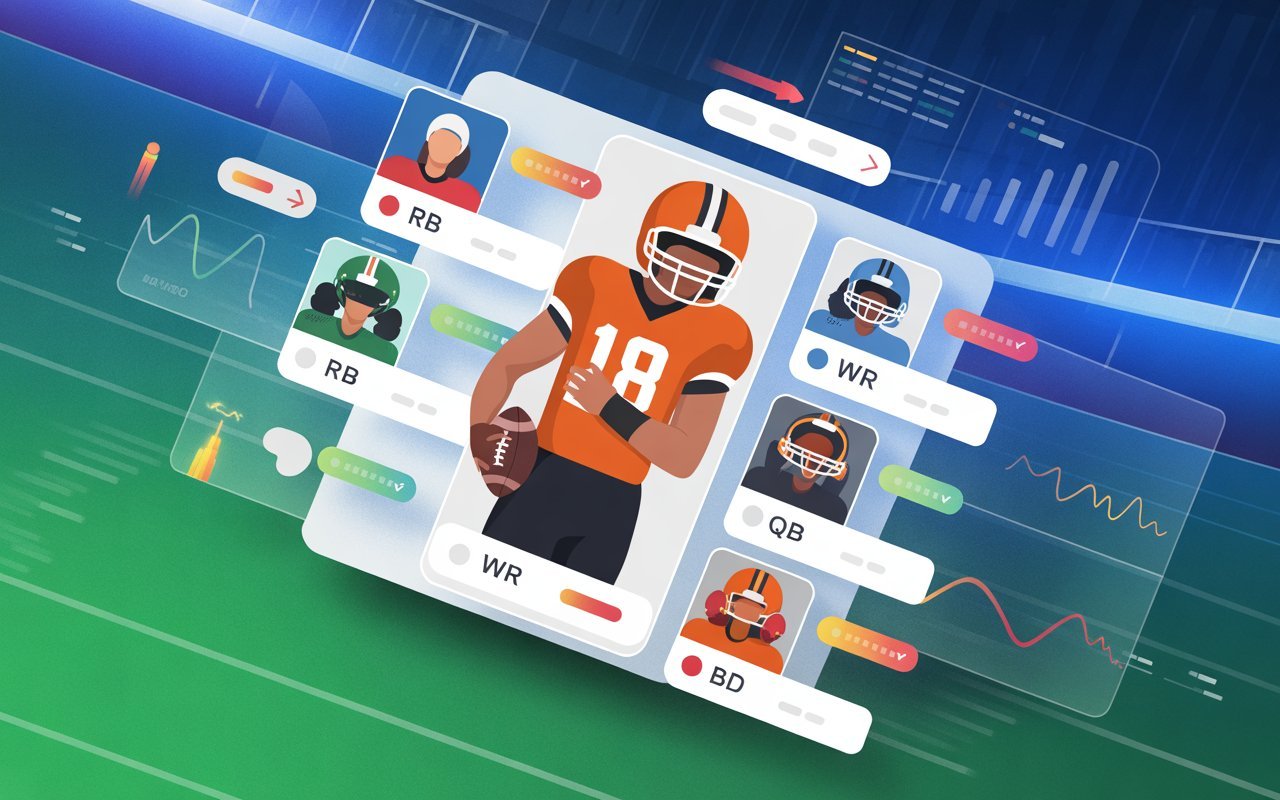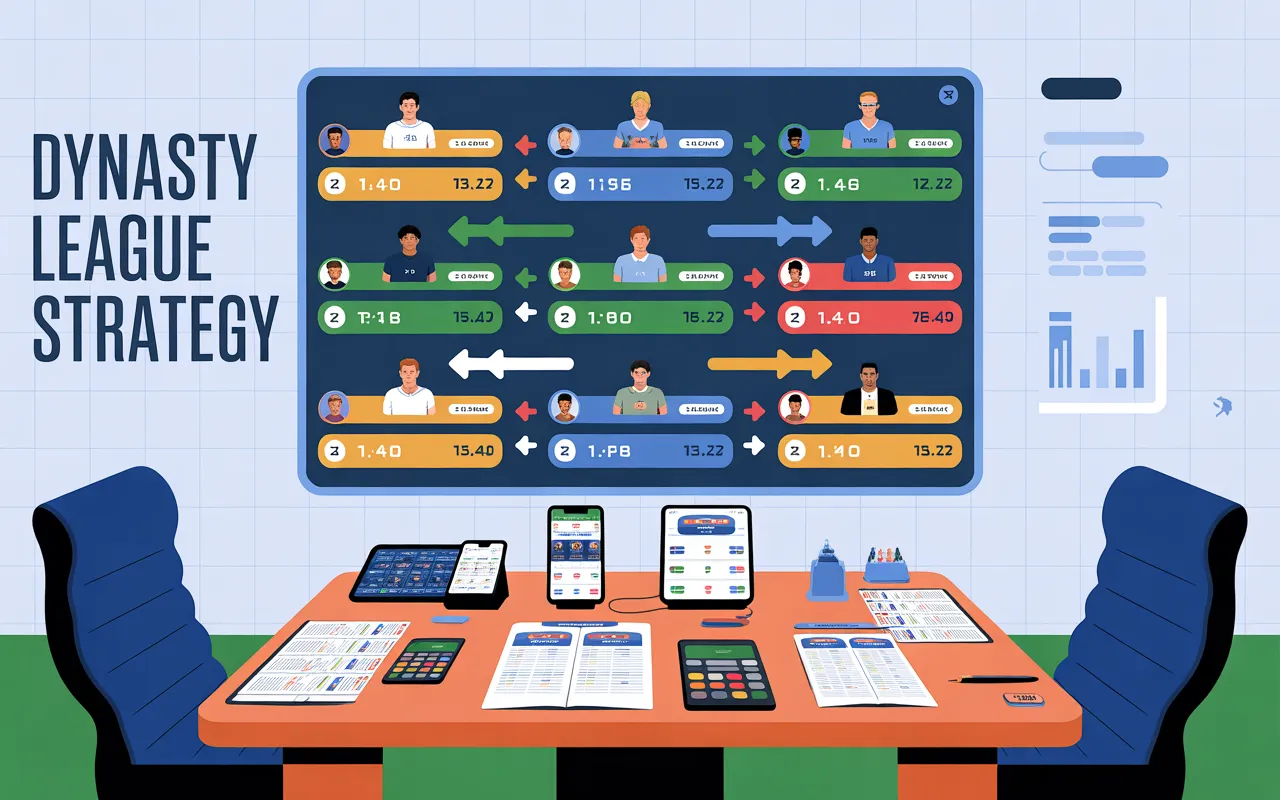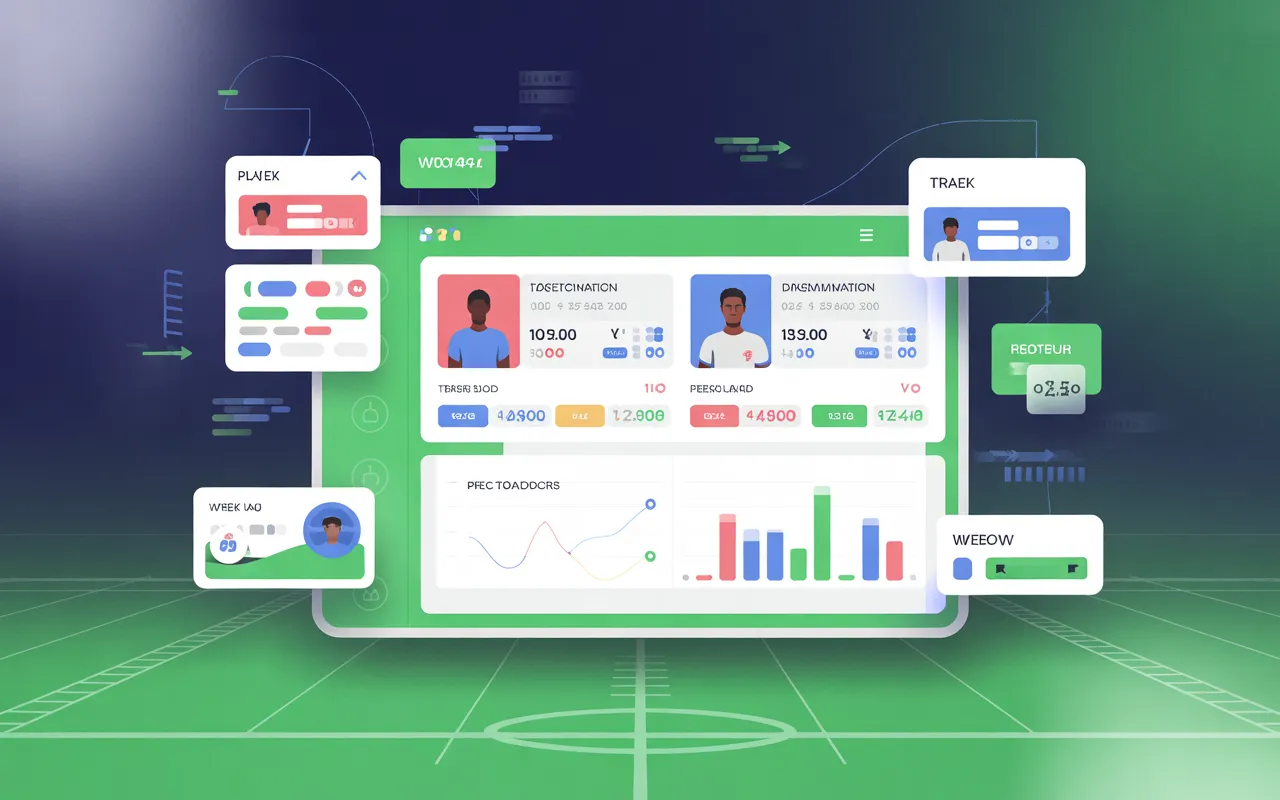Every fantasy football season, managers ask the same question: “Am I winning this trade?” A single move can make or break your playoff chances. According to a FantasyPros 2024 survey, more than 67% of fantasy owners regret at least one trade per season usually because they didn’t properly evaluate fairness. That’s where a Fantasy Football Trade Analyzer comes in.
These tools break down trade offers using player ratings, roster needs, league settings, and projections. But here’s the catch: not all analyzers are created equal, and knowing how to use a fantasy trade analyzer correctly separates casual managers from championship contenders.
In this guide, we’ll cover trade fairness, scoring settings, dynasty and keeper league strategies, and even how to use analyzers for rookie picks. If you’re just starting out, check our guide on basic fantasy trade analyzer strategies before diving deeper. For more advanced tactics, explore our section on trade analyzer best practices 2025.
Why Trade Analyzers Matter in Fantasy Football
- They prevent one-sided trades that can ruin league balance.
- They help evaluate short-term vs. long-term player value.
- They allow customization for PPR, standard, dynasty, or superflex leagues.
- They save time by analyzing injury risk, bye weeks, and roster gaps.
Without them, you’re often relying on gut instinct or biased community votes.
Step 1: Understand How a Fantasy Trade Analyzer Works
Before diving into trades, let’s uncover how trade analyzer works behind the scenes:
- Algorithms & Projections: Pulls from past performance, expected performance, and rest-of-season outlooks.
- Scoring System: Adjusts values for PPR vs standard scoring leagues.
- Roster Context: Identifies weaknesses (like thin RB depth) and suggests fixes.
- Injury Adjustments: A fantasy trade analyzer injury risk adjustment lowers values of players with durability concerns.
- Dynamic Updates: Tools like FantasyPros or FantasyCalc update player values daily based on breaking news.
👉Pro Tip: Always check the update timestamp using outdated projections can make a trade look fair when it’s not.
Step 2: Comparing Trade Analyzer vs Trade Calculator
Many ask: trade analyzer vs trade calculator fantasy football—what’s the difference?
| Feature | Trade Analyzer | Trade Calculator |
| Customization | League settings, scoring, roster depth | Basic value comparison |
| Injury Risk | Adjusts dynamically | Often ignored |
| Dynasty Picks | Includes rookie and draft pick value | Rarely included |
| Output | Fair Trade Rating, deal insights | Single “value number” |
👉 If you want more than raw numbers, stick with analyzers.
Step 3: Tailor to Your League Type
Different leagues require different strategies:
Dynasty Leagues
Use a fantasy trade analyzer for dynasty leagues to value rookie picks, young talent, and long-term projections. Rookie picks can be worth more than aging veterans.
Keeper Leagues
A trade analyzer for keeper leagues helps evaluate contract years and keeper costs. Don’t trade away a cheap keeper for a short-term rental.
Superflex Leagues
An analyzer tool for superflex leagues puts premium value on QBs. A backup QB may outscore WR3s in trade balance.
Re-Draft Leagues
Here, the rest of season trade analyzer NFL 2025 is your best friend. Focus on current season value, schedules, and bye weeks.
Step 4: Mid-Season & Mock Draft Applications
Using fantasy trade analyzer mid season
Perfect for buy-low/sell-high deals after injuries or slumps.
Best fantasy trade analyzer for mock drafts
Use before the draft to test strategies and simulate trades.
How to use trade analyzer with draft picks:
Essential for dynasty/keeper leagues when valuing future assets.
Step 5: Interpreting Output Metrics
A key skill is knowing how to interpret trade analyzer output metrics.
- Fair Trade Rating (0–100%): Anything above 85% usually means a balanced deal.
- Roster Fit: Even a “fair” trade can hurt your starting lineup.
- Positional Needs: Always check team depth charts before finalizing.
Season Value vs Long-Term Value: In dynasty, don’t ignore long-term upside.
👉How much should I overpay in a trade analyzer? Experts suggest 5–10% is acceptable if it fills a roster hole.
Step 6: Customization & Mobile Apps
Modern tools now offer a fantasy trade analyzer with custom settings—you can tweak league scoring, roster sizes, and even injury multipliers.
Many platforms also have trade analyzer app mobile friendly versions, letting you evaluate trades on-the-go during Sunday games.
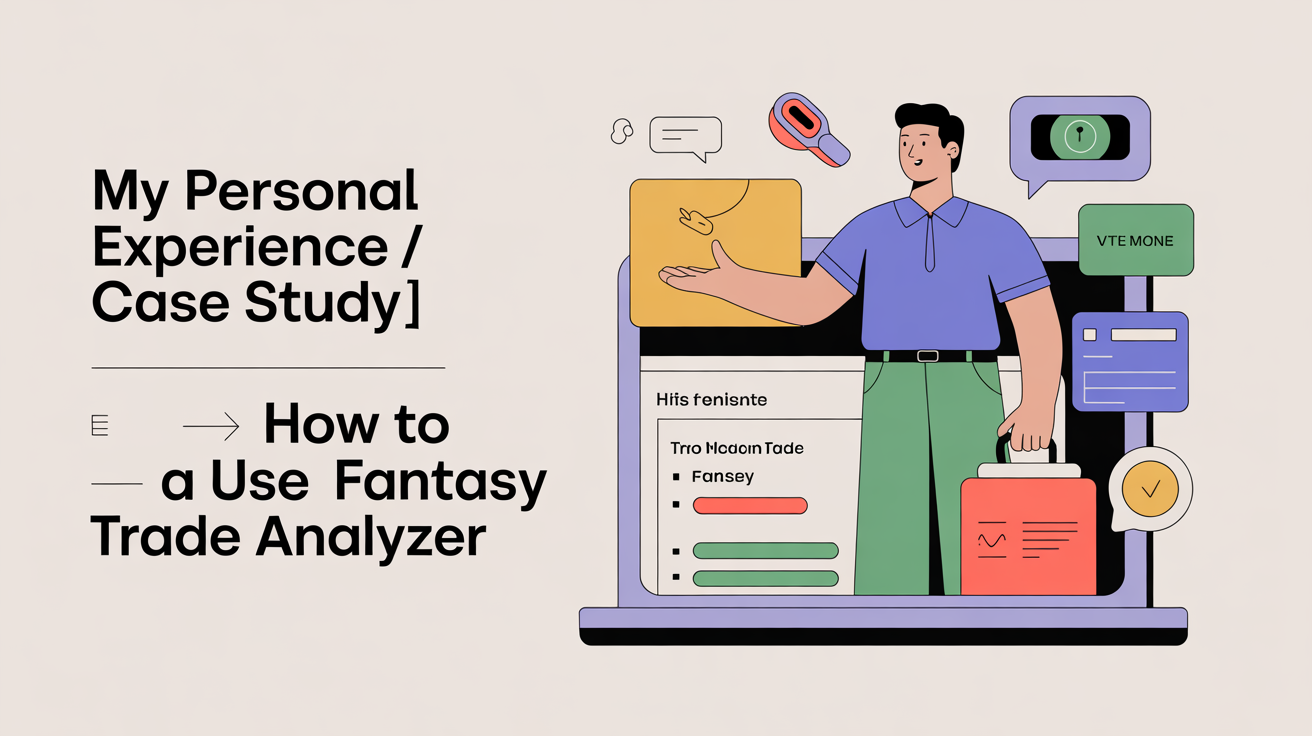
My Personal Experience / Case Study
Last season, I misused a trade analyzer. I swapped Jonathan Taylor for a “higher-ranked” WR, ignoring injury adjustments. Two weeks later, my new WR went on IR. Lesson learned: always check injury risk adjustments.
On the flip side, I scored big by using the analyzer mid-season to flip a surplus RB for a WR2. That trade helped me plug a void in my roster and secure a playoff spot. My best advice: don’t just chase “fairness”—consider roster balance.
Expert Insight

Fantasy analyst Matthew Berry once said: “A fair trade isn’t about who wins the calculator. It’s about who improves their team.”
Matthew Berry Social Media Accounts:
Instagram: @matthewberrytmr
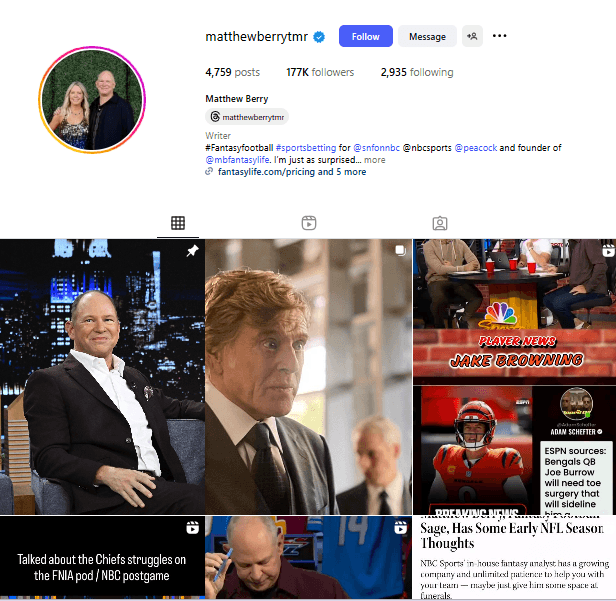
Twitter: @MatthewBerryTMR

External Sources & Stats
- Fantasy Trade Analyzers
- FantasyPros Trade Analyzer
- ESPN Fantasy Football
- FantasySP Trade Tools
- Dynasty League Football
- Sleeper Fantasy Football
Stat: Sleeper reported in 2024 that 76% of winning teams made at least one mid-season trade using analyzers or calculators.
Trade Analyzer Mistakes to Avoid
- Ignoring custom settings.
- Overvaluing rookies without proven production.
- Forgetting to factor bye weeks.
- Treating the analyzer as gospel instead of a guide.
Conclusion
Knowing how to use a fantasy trade analyzer is one of the most powerful edges in fantasy football. From dynasty rookie picks to redraft playoff pushes, analyzers help you make smarter, fairer trades.
👉 Bookmark this guide, explore our basic fantasy trade analyzer strategies, and check our full breakdown on trade analyzer best practices 2025 to sharpen your edge.
FAQs About How to use a fantasy trade analyzer
How to analyze fantasy trade fairness?
Look at Fair Trade Ratings, positional needs, and roster balance. A trade can be fair numerically but harmful strategically.
What’s the difference between PPR and standard scoring analyzers?
A fantasy trade analyzer PPR vs standard scoring values receptions differently. PPR boosts WRs and pass-catching RBs, while standard favors TD-heavy players.
Can I use a trade analyzer for Underdog leagues?
Yes. Learn how to use fantasy trade analyzer underdog by syncing scoring rules and adjusting projections to that format.
Is community trade value better than analyzers?
A fantasy trade analyzer vs community trade values shows tools are more objective, while communities bring human bias and market perception.
What are the best practices for using a trade analyzer in 2025?
Follow trade analyzer best practices 2025: check updates, use custom settings, balance short/long-term value, and confirm with expert rankings.


